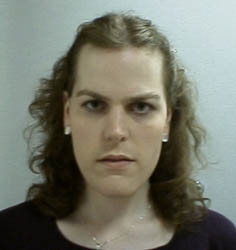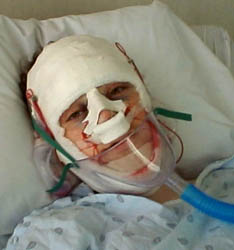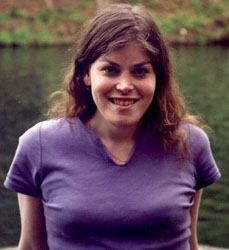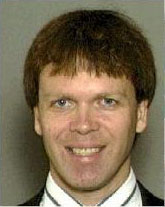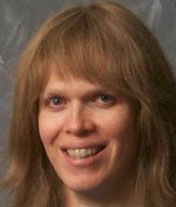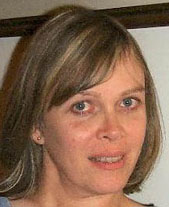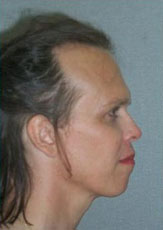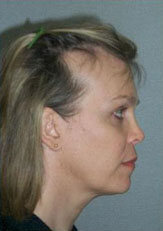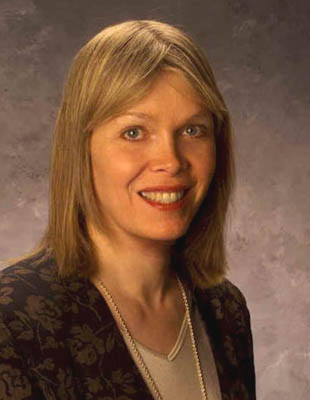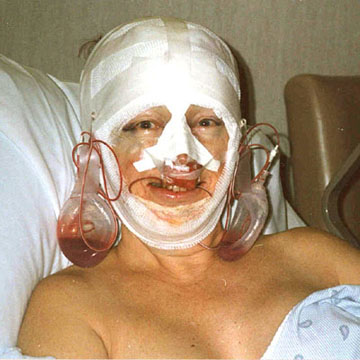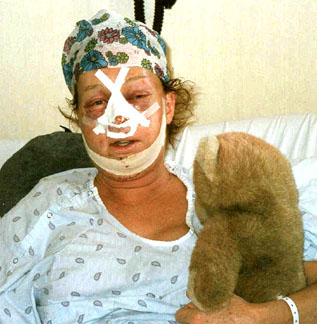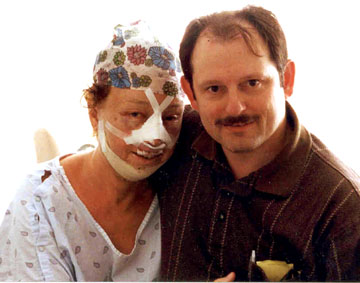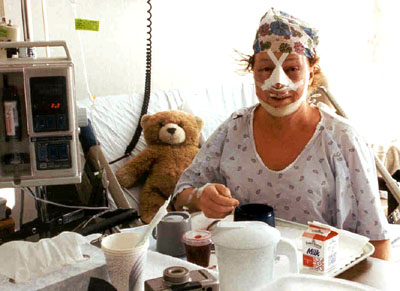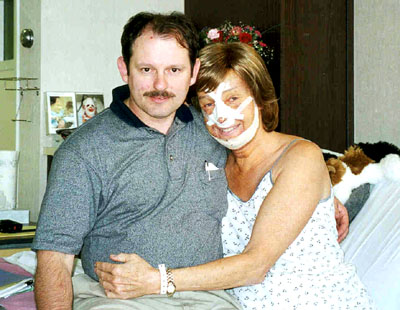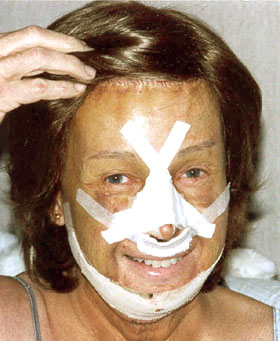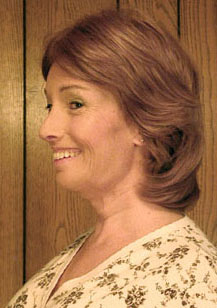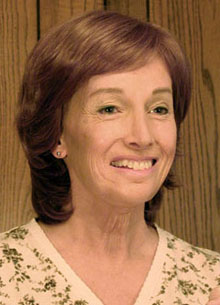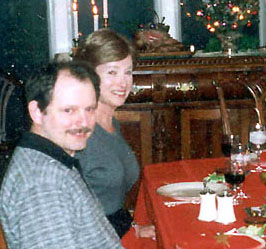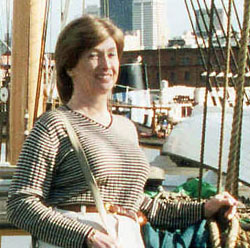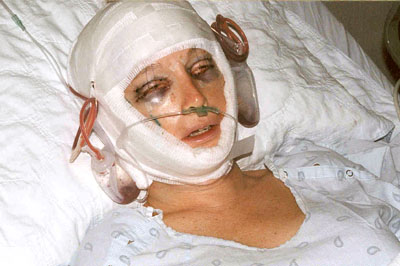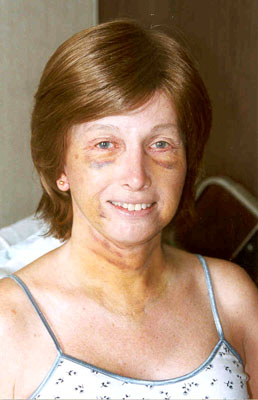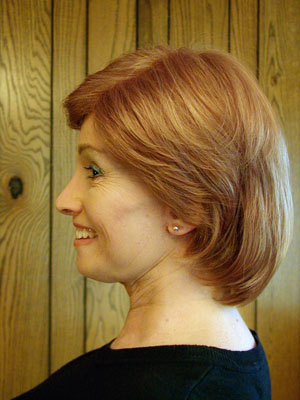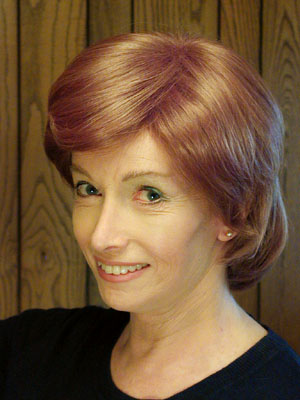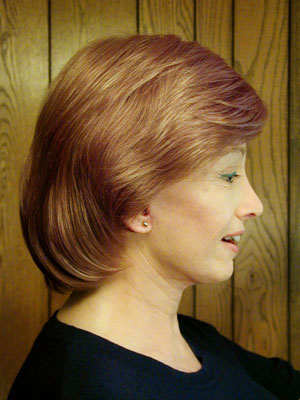|
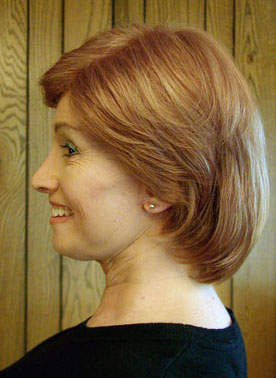 |
|
|
בעשרה בנובמבר, 1999, עברה לין קונווי - Lynn Conway ניתוח נישוי פנים (FFS). הניתוח בן 10 השעות נעשה ע"י ד"ר דוגלס אוסטרהאוט (Douglas Ousterhout, M.D., D.D.S.), בקמפוס דייויס של המרכז הרפואי קליפורניה-פסיפיק בסן-פרנסיסקו. דאג אוסטרהאוט הוא המנתח שהיה החלוץ ביישום הטכניקה הניתוחית האגרסיבית של שיחזור עצמות הפנים עבור נשים טרנססקסואליות.
מטרת הניתוח לנישוי הפנים FFS הינה להעלים או לצמצם רבים מן העיוותים הבין-מיגדריים בעצמות הפנים, שנוצרו אצל נשים טרנססקסואליות MtF בעת הזיכור (masculinization) שגרם הטסטוסטרון בשלהי גיל ההתבגרות. כדי להמחיש את מה שאפשרי כיום להשיג, קיראו על חוויות הניתוח והתבוננו בתמונות המדהימות של לפני/אחרי באתרים של אנדראה ג'יימס , בקי אליסון , ג'ינה , מדליין , ניקי , סאלי , ו‑ רחל , אשר כולן מנותחות של ד"ר אוסטרהאוט. לקישורים נוספים אודות FFS, ראו גם את הדף של דיאנה על הניתוח עם ד"ר אוסטרהאוט, הדף של ג'סיקה על הניתוח עם ד"ר שפיגל במרכז הרפואי האוניברסיטאי של בוסטון , ו- דף ה- FFS באתר beginninglife.com .
היתרונות של FFS החלו להיוודע ברבים, כשיותר ויותר נשים טרנססקסואליות עברו ניתוחים אלו בתחילת שנות ה-2000, וזה הוביל לדרישה ליותר נגישות ויותר תמיכה רפואית לתהליכים אלו, כפי שמתארת אנדראה ג'יימס מכתב גלוי ל- HBIGDA (אגודת הרי-בנג'מין) מה-16 ביוני 2006 :
"אני קוראת בדחיפות לאגודת HBIGDA וכל אנשי הסיוע המקצועי לתת משקל גדול יותר לנושא הקול והפנים ב'נהלים לטיפול'. ואני קוראת לכם במיוחד לשקול להביע תמיכה בצורך הרפואי בתהליכי נישוי פנים לאלו שנחשפו להורמונים זכריים במהלך ההתבגרות...." - אנדריאה ג'יימס
האתר שלפניכם כולל נתוני רקע, יומן אירועים וכמה תמונות הנוגעות להתנסותה של לין בעת שעברה ניתוח נישוי פנים, בתקווה שחומר זה יוכל להועיל לאחרים השוקלים ניתוח שכזה.
|
בית ההארחה Cocoon |
||
מעט רקע עלFFS :
כבר בסוף שנות ה-80 הבין ד"ר דוגלאס אוסטרהאוט שאצל נשים טרנססקסואליות (MtF), ההשפעות של זיכור הפנים (facial masculinization) עלולות להיות מעוותות לגרום נזק חברתי ממש באותה מידה שגורם עיוות פנים חמור אצל נפגעי תאונות, ועיוות פנים מסיבות גנטיות אצל ילדים. מאחר שהיה לו ניסיון ניתוחי נרחב בעצמות ורקמות הפנים, בשיחזורים ובניתוחים פלסטיים ואסטתיים, וכן "ערכת-כלים נרחבת של טריקים ניתוחיים" שהיה יכול ליישם כדי לפתור בעיות שכאלה, היה ד"ר אוסטרהאוט חלוץ בבחינת שיטות חדשות לניתוחים אגרסיביים ביותר לשיחזור תווי הפנים של נשים טרנססקסואליות.
רבות מן הטכניקות הניתוחיות בהן השתמש ד"ר אוסטרהאוט לבצע FFS מתוארות בספר הלימוד שכתב "עיצוב אסטתי של שלד הפנים" Aesthetic Contouring of the Craniofacial Skeleton, Douglas K. Ousterhout, Ed., 1991.. הטכניקות שלו מרחיקות לכת הרבה יותר מהניתוחים הקוסמטיים המסורתיים (כפי שניתן לראות ב שרטוטים ותמונות מתוך הספר, של ניתוח הסרה ועיצוב מחדש של חלק גדול מעצמות המצח וארובות-העיניים כדי להעלים את בליטת-הגבות הגברית).
במקרה של נשים טרנססקסואליות, מתמקד ד"ר או (כינוי החיבה שלו - Dr. O. - המתרגמת) בדרך להתאים את נתוני המימדים של כל מערכת פנים לטווח הנורמאלי הנשי, בהתבסס על מספר מדידות פיסיות אנתרופולוגיות. כתוצאה מדרישות ההישרדות במהלך האבולוציה האנושית, חלה התאמה של הפנים האנושיות אצל הזכרים, כדי להגן עליהם בעת ציד ולחימה, שעניקה להם עצמות-גבות בולטות ועצמות סנטר/לסתות כבדות. אבל, הפנים האנושיות אצל הנקבות התפתחו (בדומה לפניהם של ילדים) מותאמים לצורך הסתתרות/בריחה טובים יותר, ע"י כך שיש להם שדה ראייה חופשי יותר בשוליו (כשהעיניים יותר בקידמת מבנה הפנים, וללא בליטת עצמות הגבות). הבדלים אלו במאפייני המין המשניים נוצרים ע"י השוני בהורמוני המין הנמצאים בגופם/ן של בנים ובנות לאחר הבגרות המינית.
תחת השפעת ההורמון הזכרי טסטוסטרון, מתחיל הזיכור המהיר בתווי הפנים של הבנים במהלך הבגרות המינית, וממשיך להתפתח בשנות העשרים שלהם, וכן מתפתחת צמיחתו של שיער הפנים והעמקתו של הקול. הסרת המקור לטסטוסטרון (האשכים) מונע השפעות אלו של זיכור על הפנים, כפי שניתן לראות ב פרופילים של שתי בנות היג'רה באתר של טקשי אישיקאווה Takeshi Ishikawa's (במשך הרבה מאות שנים בהודו, מספרים גדולים של נערות טרנססקסואליות בגיל העשרה עברו מרצונן החופשי סירוס והסרת הפין כחלק ממהלך ההצטרפות לכיתת ההיג'רה; לאחר מכן הן חיות את חייהן כ"נשים" ב"משפחות" של כיתת ההיג'רה). לשתי בנות ההיג'רה בתמונה שמציג טקשי יש עצמות-גבות שאינן בולטות, עצמות סנטר ולסתות קטנות, ומצח המתמזג בגשר האף בקווים חלקים. בהיעדר הטסטוסטרון, תווי פניהן נותרו כאלו של ילדים ונראים ממש כמו אלו של נשים צעירות ויפות אחרות (על אף שלבנות ההיג'רה אין בדרך כלל יכולת לקבל הורמונים נשיים).
אך מה ניתן להיעשות כדי לסייע לנשים טרנססקסואליות האנוסות, עקב הנסיבות, לגדול כבנים וכך נאלצות לסבול זיכור פנים? אפשר לעשות ניתוח נישוי לפנים שעברו זיכור, הכולל עיצוב מחדש של תווי המצח, הקטנה או העלמה של בליטת עצמות-הגבות, בניית חיבור חלק מהמצח לעצם-האף, הצרה וקיצור של עצמות הלסת והסנטר (תוך שינוי מיקום הסנטר לזווית חדשה) וכן עיצוב מחדש של הגרוגרת לסילוק הבליטה המכונה "התפוח של אדם". אבל, כמו בניתוח שיחזור לנפגעי תאונות דרכים ולילדים עם חיך-שסוע ושאר עיוותי פנים, ניתוח FFS זה הינו אגרסיבי במידה קיצונית.
|
||
|
|
|
|
איש אינו בוחר לעבור ייסורי ניתוח קיצוני שכזה "מסיבות קוסמטיות". המטופלים חייבים להיות חדורי מוטיבציה, ונכונים ליטול כמה סיכונים ממשיים, כאבים, סבל וסיבוכים. תקופת ההחלמה לאחר ניתוח ה-FFS הינה טראומטית ועתירת כאבים, וזמן רב לאחר הניתוח עוד נמשכות תופעות לוואי רבות: ירידת נפיחות נוקשה עלולה להימשך חודשים, עלול להיגרם חוסר תחושה באזור הסנטר שנעלם מאד לאט, ובקרקפת יהיו אזורים שבהם תאבד התחושה לשנה או יותר, ולעיתים אף לתמיד.
אבל, בכמה מטופלות טרנססקסואליות שאצלן העצמות בגבות ובלסתות הן מאד גדולות, משמעות הניתוח אצל ד"ר אוסטרהאוט יכולה כמעט להיות ההבדל בין חיים סבירים לבין גהינום עלי אדמות, ז.א. בין לזכות בנקל בקבלה כנקבה רגילה ובין לסבול בהתמדה מלעג פומבי כבד בגלל המראה שלך. בהרבה מהמקרים היותר אופייניים, הניתוח ממיר את תווי-הפנים המקוריים של "טרנסית" בתווי-פנים נשיים, נעימים למראה.
לדוגמה, בחנו את המקרה של סאלי , כפי שניתן לראות בשלוש התמונות הבאות. התמונה הראשונה (משמאל) מראה אותה בעת שעוד היתה נער, והיא מאד יפה בתמונה זו. התמונה השניה מראה אותה לאחר שנתיים של הורמונים ואלקטרוליזה. הרבה נשים טרנססקסואליות היו חשות נפלא ביותר אילו הצליחו לעשות את השינוי המיגדרי כמו מהתמונה הראשונה לשניה, ולעומתן הרבה היו עשויות לחשוב שהן "נראות כעת ממש נפלא".
אבל, על-אף שבתמונה השניה תווי פניה מרוככות ונשיות כלשהו, עדיין תבחינו שהיא נראית "טרנסית". עצמות-הגבות הבולטות, הסנטר הגבוה ועצם הלסת הרחבה והבולטת, אשר גרמו לה להיראות יפה בתור נער, מקלקלים עכשיו את המראה שלה בתור אשה. התמונה השלישית מראה אותה לאחר שעברה FFS נרחב ע"י ד"ר דאג אוסטרהאוט. עכשיו אנו מבינות את הליקויים בתמונה השניה, ולמה שם היא "לא הייתה יפה". מהפך ה-FFS, על-אף שהוא עדין, הוא מאד עמוק. עכשיו היא אשה יפה להדהים, אפילו ללא איפור. כאן זוהי תוצאה מצויינת. לא כל התוצאות תהיינה כל כך מדהימות. אבל, לעיתים קרובות מאד תוצאות אלה משנות את כל החיים בהשפעתן על היכולת "לעבור" ועל ההערכה העצמית.
משמאל לימין: לפני המעבר המיגדרי; אחרי שנתיים טיפולי הורמונים ואלקטרוליזה; אחרי FFS עם ד"ר אוסטרהאוט.
|
|
|
|
ובכן, מה לכל הרוחות קורה פה? מה גרם להופעה שלה להשתנות עד כדי כך? את התשובה נראה כשנביט באותם שינויים ממש אבל בפרופיל. למרות שאנו כמעט אף פעם לא מסתכלות על עצמנו בפרופיל, זהו הכיוון שממנו אנשים אחרים נועצים בנו מבטים לעיתים קרובות. ואלו הם תווי-הפנים שלנו בפרופיל שהכי קובעים את יפי-הפנים, ובחצי-פרופיל - את השיוך המיגדרי. לכן, אלו הם הפרופילים שלנו שתכופות מאד מסגירים תווי-פנים "טרנסיים" ולעיתים קרובות מונעים מנשים טרנססקסואליות להיראות יפות.
שתי התמונות הבאות מראות את סאלי בפרופיל, לפני ואחרי ה-FFS שלה. השינויים הם באמת מדהימים. המראה שלה לפני FFS היה מאד לא-מחמיא לאשה, על אף שהיא נראתה "בסדר" במבט מלפנים. אחרי FFS עצמות-הגבות הבולטות שלה נעלמו והומרו במתווה נשי מעוגל; אפה עוצב מחדש בקו המשך למצח המשופץ; שונו מן היסוד הגובה והזוית של הסנטר שלה; ובעצם הלסת הוקטנו מאד הרוחב וההתנוססות לפנים.
מבט-צד של סאלי לפני (משמאל) ואחרי FFS (מימין)
|
|
|
רק בפרופיל רואים בתמונות אלו בבירור את השינויים הדרמטיים שבוצעו בשלד הפנים במהלך ה-FFS. שינויים אלו, במבנים עשויי-העצם שמתחת לפנים, יכולים לבטל הרבה מן הנזק שנגרם ע"י הטסטוסטרון במהלך תחילת ההתבגרות שלה. לסאלי יש לבסוף תווי פנים דומים לאלו שהיו יכולים להיות לה אילו הייתה עוברת את תחילת ההתבגרות שלה בתור ילדה: עם אסטרוגן, ובלי טסטוסטרון. התוצאות הסופיות הן נפלאות והן באמת משנות את כל החיים, כפי שניתן לראות בתמונה הבאה. תוצאות אלו מעידות עד כמה זה חשוב לחברה שלנו לעזור לנערות טרנססקסואליות מוקדם יותר בחיים – כך הן תוכלנה להימנע מלפתח תווי פנים כל-כך גבריים אשר מצריכים ניתוחים כל-כך כואבים וכל-כך יקרים כדי לתקנם.
|
|
מהרבה בחינות, ההשפעה העצומה על חיי הנשים הטרנססקסואליות ועל סיכוייהן לאושר בחיים, כתוצאה מהמצאת ה-FFS, דומה לזו של המצאת ה-SRS. האשה היכולה בדרך זו 'לסובב לאחור' את תהליך הזיכור של פניה חווה משהו עמוק בהרבה מאשר תרגיל ראוותני וייפיוף ההופעה. במקום זאת, הניתוחים האלו, האגרסיביים במידה קיצונית, עניינם ריפוי ממצוקה, קבלה עצמית, ולבסוף שלווה במציאת מקומו האמיתי של האדם בחברה. להבנה מעמיקה של התהליך הזה, ראו את המאמר של רבקה קסטל (Rebecca Kastl) " 'עוברת' או 'לא‑עוברת' " . ואז הקשיבו למילותיה של חברתי אמילי הובי (Hobbie (Emily :
"לפני הניתוח שלי - כשיצאתי לרחוב לא הצלחתי להימנע מלהיחשב 'משונה' בעיני כמה אנשים ולא חשוב עד כמה הפגנתי אושר ושלווה. אני לא מדברת כאן על 'לעבור', אני מדברת – כאדם - על איך שאנשים ראו אותי. אני רוצה שאנשים יראו 'אותי' בבהירות, ולא דרך מסך של ספק 'מה זה יכול להיות?'. לפני הניתוח שלי עם דאג, ככל שהייתי נערה שמחה ונמרצת, הקווים והגבנונים בפניי שלא היו שייכים 'לי' כירסמו בביטחוני העצמי, והיו 'לא במקום' ממש כאותו תלתל שיער שמזדקר מראשך ולא ניתן להשכיבו בשום אופן.
אני בטוחה שאם הניתוחים של דאג לא היו קיימים, הייתי מסתדרת הכי טוב שאפשר, אבל אני חושדת שלמרות כל האושר שהייתי מפיקה מחיי, ההבדל בין מי שאני באמת, לבין מי שהפנים שלי אומרות שאני, היה מכרסם בי מבפנים. מי יודע.
מעבר לתוצאות, זה מאפשר לי לא סתם לעבור דרך החיים והחברה – הכי טוב שיכולתי לקוות לפני הניתוח – אלא לקחת את החיים באופן פעיל, למצוא בתוך עצמי שלווה שאחרים רואים וקולטים, או את היכולת לכך. זהו מעגל נפלא המגביר את עצמו, כאשר הנינוחות השלווה בתוך עורי שלי מקרינים ממני לאחרים, אשר בתמורה חשים את הביטחון העצמי שלי ומשקפים אושר חזרה לעברי ----,"
עבודתו של ד"ר אוסטרהאוט על נשים טרנססקסואלות התרחבה במהירות רבה במהלך אמצע-סוף שנות ה-90 כאשר השמועה אודות המהפכים המצויינים התפשטה בין היועצים שטיפלו בהן. השמועה התפשטה עוד יותר מהר כאשר תמונות "לפני-אחרי" החלו להופיע באתרי אינטרנט שעסקו בטרנססקסואליות, בצירוף מידע איך להתכונן לניתוח היסודי הזה וכיצד להתמודד איתו. אנדריאה ג'יימס(Andrea James) הייתה האשה הטרנססקסואלית הראשונה שהציגה באינטרנט תמונות שכאלו על תוצאות ה-FFS שלה. התמונות שלה הובילו את ניקי, סאלי, לין והרבה נשים טרנססקסואליות נוספות לראות את מלוא המשמעות של ה-FFS ולהחליט לעבור בעצמנו את הניתוח. עד לחודש מאי 2001, ביצע ד"ר אוסטרהאוט ניתוחים אלו של שיחזור‑פנים נרחב לכ-525 עד 550 מנותחות טרנססקסואליות.
הרבה מטופלות בתהליך המעבר המיגדרי MtF עוברות כיום FFS ממש לפני המעבר החברתי אל תוך שנת ה‑"התנסות בחיים ממשיים" ( Real-Life Experience - RLE). דבר זה יכול לשפר במידה אדירה את קבלתן המהירה כנשים במהלך ה-RLE, משום שהן נראות ממש הרבה יותר נשיות בהופעתן מאשר לפני ה‑FFS. שימו לב ש אנדריאה , ג'ינה , מדליין , ניקי , סאלי ו רחל היו כולן בשלב מוקדם במעבר המיגדרי שלהן MtF כשדאג עשה עבורן FFS.
קבלה טובה יותר במהלך ה-RLE מאפשרת להרבה בנות לעבור חברתית מזכר לנקבה "באותו מקום עבודה", דבר שעוזר להן להבטיח רציפות הכנסה בעוד הן מתכוננות בעקבות ה-RLE לעבור ניתוח לשינוי מין SRS. למרות שניתוח נישוי הפנים הוא יקר למדי, ההימנעות מאובדן הכנסה יכולה בכמה מקרים לפצות על הוצאות ה-FFS ואף למעלה מזה. וגם, הניסיון הראה שהוצאות ה-FFS מוכרות כהוצאה פטורה ממס (בארה"ב – המתרגמת), מאחר ש-FFS הינו חלק מטיפול רפואי כולל של שינוי מין ואינו נחשב כניתוח קוסמטי מבחירה (כמו בישראל – המתרגמת).
משרדיו של ד"ר אוסטרהאוט ממוקמים בקמפוס דייויס של המרכז הרפואי "קליפורניה פסיפיק". כתובתו היא:
Douglas Ousterhout, M.D., D.D.S., 45 Castro Street, Suite 150, San Francisco, CA 94114, USA; Telephone: 001 (415) 626-2888; e-mail link.
אם אתן מעוניינות לקבוע פגישת ייעוץ עם ד"ר אוסטרהאוט, התקשרו למשרדו ובקשו לשוחח עם האסיסטנטית שלו, מירה קוֹלוּצ'יוֹ. לחומר רקע נוסף על ד"ר אוסטרהאוט ועל הטכניקות הניתוחיות שלו, ראו את האתר http://www.drdouglasousterhout.com
.
מדוע עברה לין:FFS
לין הינה אשה טרנססקסואלית מנותחת בגיל "55+", שעברה ניתוח לשינוי מין (SRS) מזכר לנקבה (MtF) לפני המון שנים ב-1968. היא ברת מזל בכך שתמיד 'עברה' לחלוטין כאשה, ומאז ועד היום היו לה קריירה וחיים נפלאים כאשה.
ולמרות הכל, לין לא שכחה מעולם את התופעות המחרידות של זיכור הפנים שהחלו לקרות לה בהיותה בשנות העשרה, על אף שבמקרה שלה התופעות האלו היו חלשות יותר מאשר אצל הרבה טרנססקסואליות אחרות. ניתוח ה-FFS המודרני סייע לה "לסובב את גלגל הזמן לאחור" דרך אותה חווייה נוראית, ולבטל את מרבית ההשפעות הפיזיות המזיקות הללו. וכך, נועד ה-FFS שנעשה ללין להעשיר את ניסיון חייה ולהעניק לה תוספת קטנה של אושר ונוחות פסיכולוגית בעודה הולכת ומתבגרת.
ניתוח ה-FFS של לין כלל קידום של קו השיער, עיצוב מחדש של המצח, העלמת בליטות הגבות, מיקום מחדש של הגבות, עיצוב מחדש של האף, עיצוב מחדש של הלסת והסנטר, והקטנת בליטת הטרכיאה בצוואר. כל אלו נעשו בניתוח אחד ממושך, הידוע בקרב המנותחות של "ד"ר או" בכינויו המאיים "העבודות". התוצאות הינן עדינות ומדהימות כאחד. לין עדיין "נראית כמו לין", במיוחד במבט מלפנים. אבל היה שם מהפך של ממש, במיוחד כשרואים זאת בפרופיל. לין דומה עתה הרבה יותר לאיך שאחותה הייתה נראית, אילו הייתה לה אחות.
לין מקווה שהמידע והחווייות המתועדות כאן יעניקו סיוע נוסף לאלו המתכננות עתה לעבור את הניתוח הזה. אם את שוקלת לעבור ניתוח זה, ויש לך שאלות נוספות מיוחדות, את יכולה ליצור קשר עם לין בדוא"ל, דרך כתובת הדוא"ל בעמוד הבית שלה. לין מקווה גם לשמור אתר זה מעודכן ושימושי ככל שניתן. אם ברצונכן להעביר משוב, הערות או הצעות, אנא צרו עימה קשר.
למידע נוסף אודות לין, הכולל הרבה תמונות מוקדמות יותר, ראו את אתר הבית שלה בכתובת:
http://ai.eecs.umich.edu/people/conway/conway-Hebrew.html : עברית
האתר ההוא כולל כתבות בעיתונות, אודות חייה ופועלה המקצועי, בכתובת:
http://ai.eecs.umich.edu/people/conway/Media/Media.html
אחת מהן, בעברית, תמצאו בכתובת:
עברית : http://ai.eecs.umich.edu/people/conway/Media/Maariv/Maariv.html
וכן גם הסטוריה אישית מפורטת, בכתובת:
http://ai.eecs.umich.edu/people/conway/RetrospectiveT.html
החלטות והכנות:
תמיד הייתי 'נערת שטח' (outdoor girl), ובמשך השנים עשיתי המון טיולי תרמילאים, טיפוס על מצוקים, ריצה, חתירה בנהרות קוצפים בסירות קנוו (whitewater canoeing), תחרויות אופנועי-שטח, וכיוב'. כל השנים האלו בשמש ובפגעי האקלים, בד-בבד עם הזדקנות טבעית, חרצו לא מעט קמטים על פני וצווארי. בראשית 1999 החילותי לחפש מידע אודות מתיחות-פנים ושיטות העלמת-קמטים כדי להצעיר את הופעתי.
חיפשתי גם אתרים של טרנססקסואליות אחרות כדי למצוא מידע על ניתוחי פנים, ונתקלתי בתמונות המדהימות באתר של אנדריאה ג'יימס. בהתבוננות בתמונות "לפני/אחרי" של אנדריאה ומנותחות אחרות, במיוחד תמונות הפרופיל, התחלתי להבין ממש עד כמה תווי הפנים של בליטת-הגבות/הלסת/הסנטר יוצרים את ההופעה המיגדרית של "טרנסית". בבת-אחת קלטתי את העיקרון של FFS וראיתי עד כמה ד"ר אוסטרהאוט הרחיק לכת בפיתוחן של הטכניקות הניתוחיות החדשות האלו.
במהלך נסיעה לקליפורניה ביוני 99, ביקרתי את ד"ר אוסטרהאוט להתייעצות, לראות מה הוא עשוי להצליח לעשות עבורי. על פי הוראותיה של מירה, עשיתי יום קודם לכן סידרה נרחבת של צילומי רנטגן של פניי, במכון רנטגן במרכז סן-פנסיסקו. דאג בחן את פניי ואת הצילומים, וקיימנו דיון על כל האפשרויות. האזנתי בקפידה להמלצותיו הראשוניות שבמהלכן הוא שירטט על גבי הצילומים את העיצוב מחדש שניתן לעשות למצח, לבליטות-הגבות ולגשר האף שלי, וכן ללסת ולסנטר שלי. כאשר הבנתי כמה הרבה שיפור אפשר להשיג, התחלתי לחשוב ברצינות לעשות זאת. בעקבות ההתייעצות, התקשרתי בשובי הביתה בדוא"ל עם כמה מנותחות קודמות שלו ללמוד עוד על ההתנסויות שלהן ועל התוצאות.
עד אמצע יולי כבר החלטתי שאני באמת צריכה לעשות את זה. אני בכל מקרה הצטרכתי מתיחת-פנים, וכעת זה היה ברור לגמרי שלעשות מתיחת-פנים בלי לעשות קודם את העיצוב מחדש לעצמות תהייה שגיאה עצומה, משום שהיתרונות של מתיחת-הפנים ירדו לטימיון אם אי-פעם בעתיד אעשה FFS שבו עיצוב מחדש לעצמות.
עברתי הרבה ניתוחים במהלך השנים, והיה ברור מקריאת תיאורי המנותחות האחרות ש-FFS יהיה מייסר במיוחד בהשוואה להתנסויות הקודמות שלי. זה הלך להיות בבירור יותר סבל מאשר ה-SRS הטיפוסי. אבל למדתי כבר שכל עוד את מוכנה נפשית לכאב ולטראומה, ואינך נפגעת מהם נפשית באופן קשה, לבסוף הזכרונות הרעים הופכים לנחלת-העבר די מהר. במקרה זה, היתרונות נראו כבדי משקל הרבה יותר מהמחיר.
חזרתי לראות את ד"ר או באוגוסט 99 להתייעצות של תכנון מפורט. החלטנו שאקבל את "העבודות", כלומר את הסידרה המלאה של ניתוחי FFS, שיבוצעו כולם במהלך ניתוח ממושך אחד. יום הניתוח שלי נקבע ל-10 בנובמבר. שילמתי את המיקדמה. זה הלך לקרות.
בין אוגוסט לאוקטובר, הייתה לי הזדמנות לפגוש אישית את סאלי ו ניקי , שתי נשים שעברו את "העבודות" עם ד"ר או. נדהמתי מהשינוי שהניתוח חולל עבורן, ולמדתי מהן המון דברים אודות הניתוח וההחלמה. זה כלל שפע של טיפים מעשיים המתייחסים להתכוננות, לסידורים, מה לקחת, דברים מעשיים אודות בית החולים והסביבה, ומידע רב על ההחלמה ולמה לצפות במהלכה.
למשל, בהתבסס על המידע באתרים ועל השיחות עם סאלי וניקי ומנותחות אחרות, התחלתי לחשוש מקלסטרופוביה משהות של חמשה ימים עם מילוי-אף בתוך ראשי. הפגתי מעט את חששותי ע"י כך שניסיתי "הרצת-מבחן": ערב אחד ענדתי מצבט-אף לשחייה, ואז אכלתי ארוחה והלכתי לישון. אכילה ושתייה היו מסובכים: היה די קשה לבלוע, ואוזניי נפקקו ונפתחו חליפות כל הזמן. אבל בהדרגה התרגלתי לזה. למרות שזה היה מטרד גדול, התחלתי לחשוב שאולי מילוי-האף לא יטריף את דעתי אחרי הכל.
בעודי אורזת למסע, חושבת על מה לקחת ומתכננת את כל הסידורים לנסיעה ולהחלמה, שקדתי הרבה על האתרים של מנותחות אחרות. היו לי הרבה שאלות קטנות שלא ידעתי עליהן את התשובה, והרבה שאף לא ידעתי לשאול. החלטתי לנהל יומן ובו הרשימות שלהלן, לחלוק עם האחרות מאוחר יותר.
[הערה: כמה מהתמונות שלמטה די מזעזעות. בחרתי לכלול אותן כדי להמחיש למנותחות עתידיות איך הן תיראינה בראשית ההחלמה. יש לקוות שזה יסייע למנותחות להקטין את הלם "המבט הראשון במראה"].
הערה חשובה אודות בית ההחלמה "COCOON HOUSE"
משעברתי FFS ושוחררתי יומיים לאחר מכן מהיחידה לטיפול נמרץ של ביה"ח דייויס, היו לי כמה אפשרויות למקומות לשהות בהם בהמשך ההחלמה שלי, כשבוע או משהו כזה. היו כמה מוטלים מקומיים (ראו להלן) , וכן המקום המכונה "חדרי-אירוח" בתוך ביה"ח דייויס. היו אלו חדרי-אישפוז בקומה שבאותה תקופה הייתה פנוייה למעט "אירוח". עבור 60 דולר ליום יכולת לשהות שם ולקבל שלש ארוחות ביה"ח שחולקו בכל יום.
חדרי האירוח היו נוחים, והיו בקירבת מקום למשרדיו של ד"ר אוסטרהאוט. אבל היו להם כמה חסרונות – כמה מנותחות חשו מאד בודדות בקומה בלתי מאוכלסת זאת. כמוכן, האוכל של ביה"ח לא נראה לכמה בנות. בדצמבר 2000 חדרי האירוח שבו לשמש את ביה"ח דייויס, ומשרדו של ד"ר אוסטרהאוט אירגן הסדרים למעון/בית-החלמה לאחר-ניתוח במקום חדש, שכיום הוא בבעלות שתי אחיות חדר-ניתוח מדייויס. הנה הדוא"ל שנשלח ע"י מרי-לו (Mary-Lou), אחת מבעלות המקום - "Cocoon House" ("בית המחבוא"), המבשר על המקום החדש:
לין, הרשי לי להציג עצמי (מרי לו) ואת שותפתי טריסיה. אנו אחיות בי"ח העובדות בחדרי הניתוח של קמפוס דייויס, במרכז הרפואי סנטרל-פסיפיק. כששמענו על סגירת חדרי האירוח, החלטנו להפוך את שתי היחידות שלנו לחדרי אירוח עבור המנותחות של ד"ר אוסטרהאוט. המטרה של טריסיה ושלי היא להעניק לכן סביבה תומכת, בטוחה, נוחה וללא-עישון. איננו מספקות סיעוד!!! אנו אחיות שסועדות!!! (We do not provide any nursing care!!! We are nurses who care!!!). אנו מספקות מיני מזון הנחוצים למנותחות המחלימות מניתוח נישוי פנים, כלומר מיצים, מים מינרליים, מעדני-חלב, רפרפות, מיני רסק פירות, מרקים, סוכריות-על-מקל. כל חדר מצוייד בטלויזיה ווידאו, במערכת סטראו עם נגן תקליטורים, טלפון (לשיחות מקומיות בלבד), תנור גז, מקרר, מיקרוגל, מעבד-מזון, מכונת קפה, מייבש שיער, וכספת לחפצי-ערך. יש לנו חצר אחורית נחמדה לשימושם הבלעדי של האורחים ובה עץ לימון! בית ההארחה "המחבוא" נמצא כמייל אחד מביה"ח, התחבורה הציבורית נוחה מאד (עולה דולר אחד). השכונה (עמק נו) הינה מוכוונת קהילה ובה מגוון תרבויות. בשונה ממרבית סן-פרנסיסקו, האזור שלנו שטוח!!! מסעדות, חנויות מכולת ומרבית השירותים קרובים מאד לבית. בכבוד רב, מרי לו.
עבור כ-125דולר ליום, "בית המחבוא" ("Cocoon House") החדש מעניק מגורים משובבי נפש, ארוחות, וקשר זמין עם הצוות במהלך ההחלמה, לקבלת סיוע בהרבה עניינים מעשיים. זהו באמת סידור חדש נהדר. התקשרו למירה במשרדו של ד"ר אוסטרהאוט לקבלת מידע נוסף, ולהסדרת שהייה ב"בית-המחבוא" לפני ואחרי הניתוח.
ביומן שלמטה, אני מדווחת על ההתנסות שלי אשר כללה שהייה ב"חדרי האירוח" הישנים שבביה"ח דייויס. אלו שתעבורנה FFS בעתיד צריכות להביא בחשבון את ההבדלים הצפויים עת תחלימו ב"בית המחבוא" (או במוטל) לאחר שתשתחררו ממחלקת הטיפול הנמרץ. למידע נוסף על כך, ראו את "האתר של בית המחבוא"
